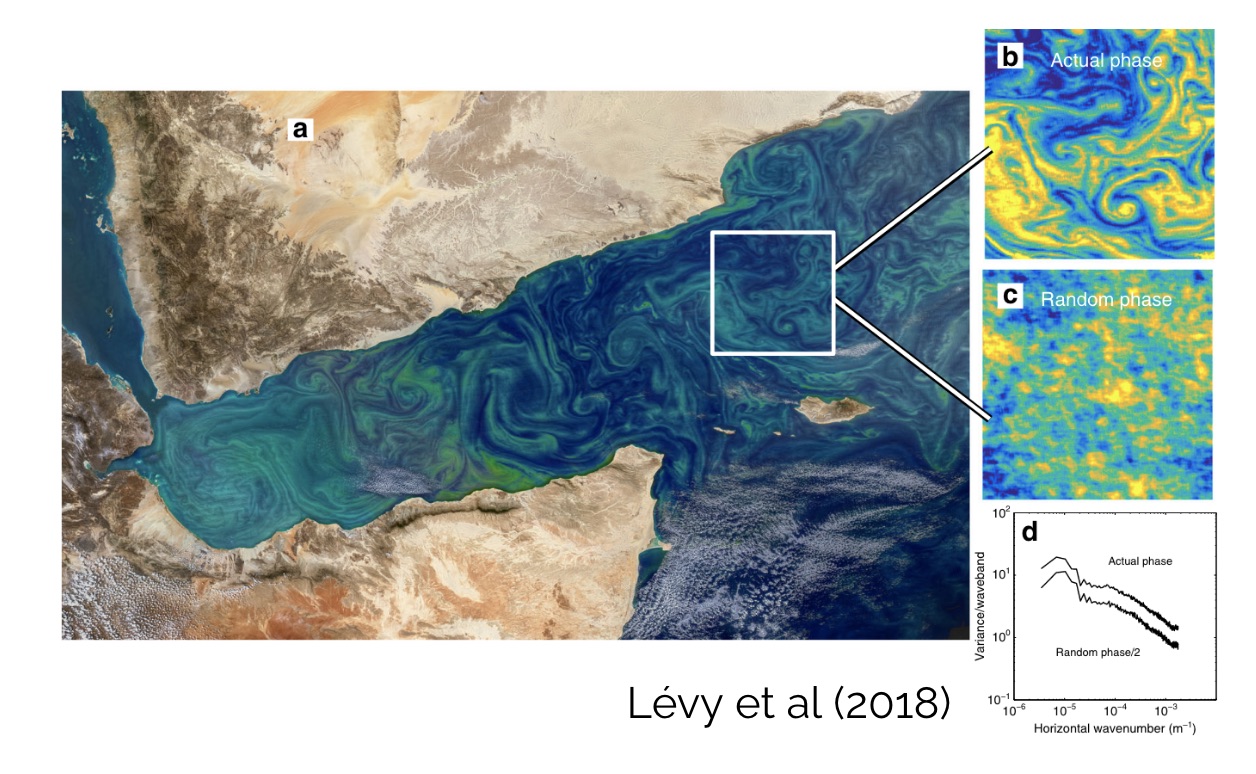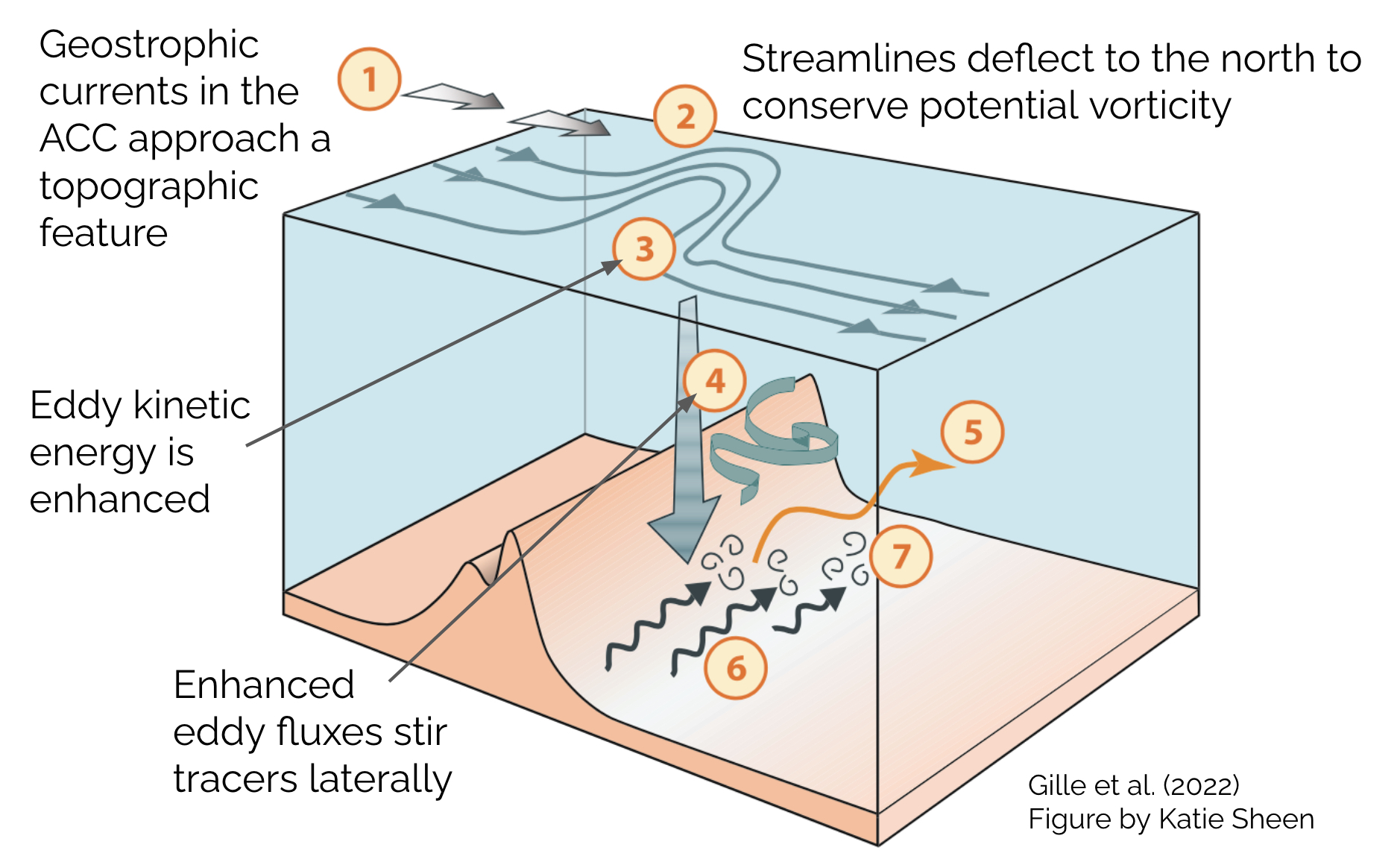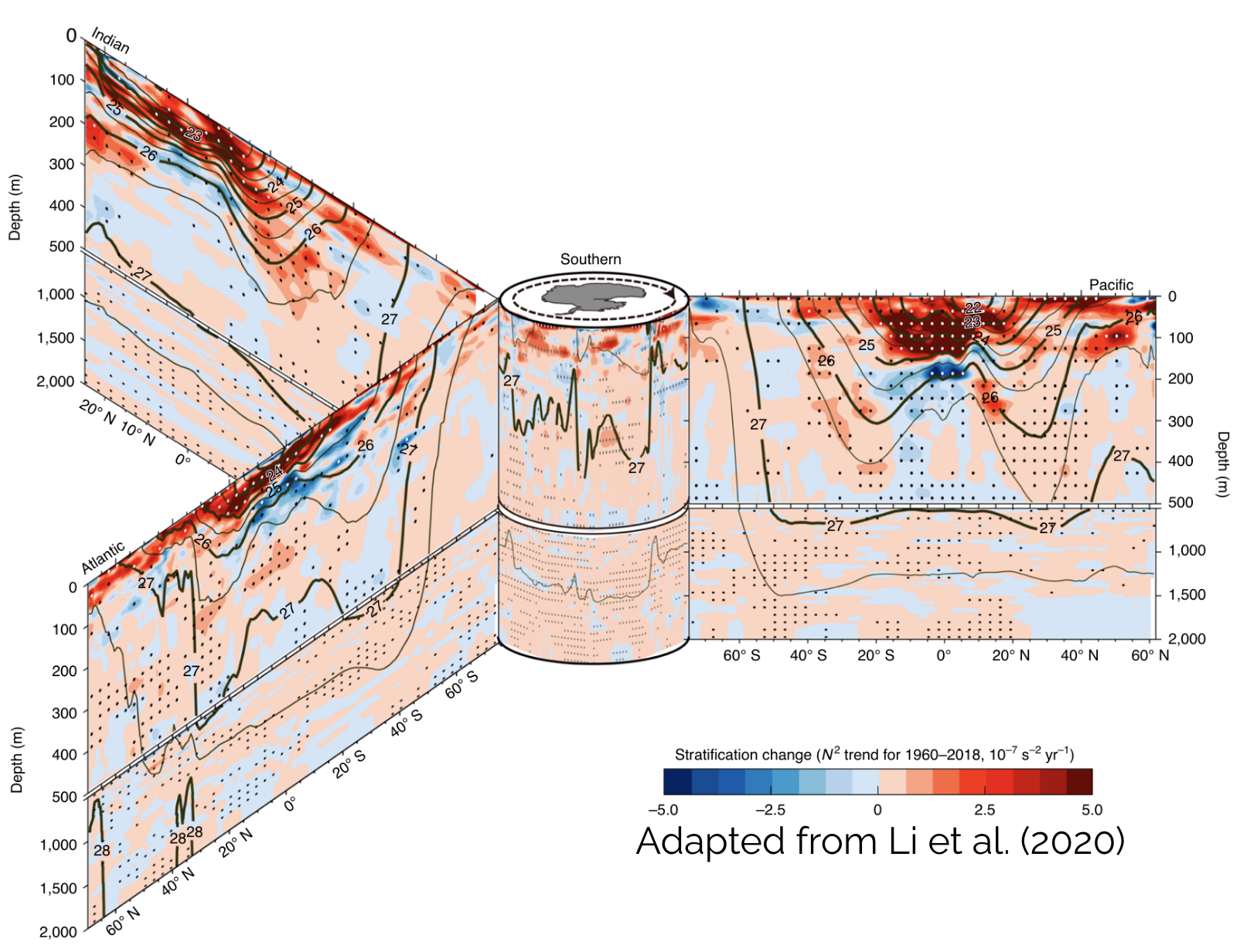Research Interests
Detection and parameterization of filamentary structures
Submesoscale motions occur on the spatial scale of 1 to 10 km, scales that are not resolved in most climate models and that have long been difficult to detect using traditional methods. However, these small but mighty processes may hold the secret to unlocking our understanding of transfer of water between the surface and interior ocean. I use satellite data to observe the spatial and temporal variability of submesoscale features across the surface ocean and describe the variability of these features using numerical models and in situ data from autonomous vehicles.

Flow-topography interactions in the Southern Ocean
The seabed of the Southern Ocean is covered in underwater mountain ranges. When the main current of the Southern Ocean, the Antarctic Circumpolar Current, interacts with this underwater topography, it generates hotspots of mesoscale stirring and submesoscale motions. My work uses in situ observational data and data from satellites to consider how these eddy kinetic energy hotspots impact tracer distributions and ventilation of the ocean.

Downstream impacts of increasing ocean stratification
In the last half century, the stratification (density layering) of the upper ocean has increased due to surface warming and sea ice melt. I use idealized numerical models to conduct process studies that investigate how the changing stratification will impact the ability of the ocean to take up and store carbon and heat into the future.

Physical mechanisms of carbon export
The ocean is the ultimate sink of 90 percent of anthropogenic carbon. However, the pathways that take organic carbon, stored primarily in phytoplankton, from the sunlit upper layers of the ocean to depth remain unconstrained and underobserved. I am specifically interested in the physical mechanisms of the eddy subduction and mixed layer pumps, which may contribute up to half of carbon export in certain seasons and regions.
